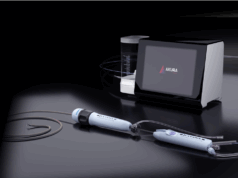
Long-term follow-up results of the CREST trial show no significant difference between patients who underwent stenting and those who underwent endarterectomy with respect to the risk of periprocedural stroke, myocardial infarction, or death and subsequent ipsilateral stroke at 10 years. The rate of postprocedural ipsilateral stroke also did not differ between groups.
The data were presented by Thomas G Brott, on behalf of the CREST Investigators, at the International Stroke Conference (17–19 February, Los Angeles, USA).
“In CREST (Carotid revascularization endarterectomy versus stenting trial), we found no significant difference between the stenting group and the endarterectomy group with respect to the primary composite endpoint of stroke, myocardial infarction, or death during the periprocedural period or any subsequent ipsilateral stroke during four years of follow-up. We now extend the results to 10 years,” the authors wrote in a paper published in the New England Journal of Medicine.
Among patients with carotid artery stenosis who had been randomly assigned to stenting or endarterectomy, the investigators evaluated outcomes every six months for up to 10 years at 117 centres. In addition to assessing the primary composite end point, they assessed the primary endpoint for the long-term extension study, which was ipsilateral stroke after the periprocedural period.
Among 2,502 patients, there was no significant difference in the rate of the primary composite endpoint between the stenting group (11.8%; 95% confidence interval [CI], 9.1 to 14.8) and the endarterectomy group (9.9%; 95% CI, 7.9 to 12.2) over 10 years of follow-up (hazard ratio, 1.10; 95% CI, 0.83 to 1.44). With respect to the primary long-term endpoint, postprocedural ipsilateral stroke over the 10-year follow-up occurred in 6.9% (95% CI, 4.4 to 9.7) of the patients in the stenting group and in 5.6% (95% CI, 3.7 to 7.6) of those in the endarterectomy group; the rates did not differ significantly between the groups (hazard ratio, 0.99; 95% CI, 0.64 to 1.52).
No significant between-group differences with respect to either endpoint were detected when symptomatic patients and asymptomatic patients were analysed separately.












